Tea Guide
How to Drink Darjeeling Tea: Top 6 Expert Tea making Tips
Focus of topic is “How to Drink Darjeeling Tea?” Who doesn’t know about Darjeeling Tea? The Ultimate Darjeeling Drink! Even if someone hasn’t got the chance to sip on the ethereal hues, the name must have resonated one’s ears a couple of times. If something is famous and when it turns out to be some food and drink, I personally have a great urge to try it once. I start imagining how it might taste. Guess, that’s a sign of being a foodie. Darjeeling is such a brew! It’s referred to as the “Champagne of Teas” and any person who hasn’t tried it, I guess, will definitely want to sip a gulp once. Wouldn’t you?
When we try to delve into what it actually is, then the topic, Darjeeling is not just one tea, but hundreds and thousands of varieties under the brand name “Darjeeling Tea“. And trust me, each tea has to be prepared accordingly. I cannot possibly account for all teas available and to confuse you more :), each tea differs from season to season and year to year. I will here, try to lay out basic guidelines in a broader fashion on how to make Darjeeling Tea. After reading this, hope you can have a basic idea on how to prepare Darjeeling Tea in the almost perfect way and best for your palate. Also making you avoid dumping your bucks on a tea which you may not like once you get it. Please remember, with questions like “How to drink Darjeeling Tea?”, it all ultimately narrows down to your personal palate and “experience” that you gain with time. SO LET’S START!
6 Expert Tips on How to Make Darjeeling Tea
The learning process on How to Make Darjeeling Tea requires a few things which I have tried to summarize under six important tea tasting tips points. Kindly look at the topics below. This is a detailed version on how to make Darjeeling Tea and not some random version pulled from all over the web. This Darjeeling Tea making article is shared here for tea connoisseurs delight and inquisitiveness and purely got from Benoy’s experience of Darjeeling from his early childhood since his grandparents worked at Majhua Tea Estate near Chimney, Kurseong.
Yes, picking the right kind of tea is important in your tea tasting session. Darjeeling greatly depends upon its tea seasons and each differ greatly. So it is important to know which season tea you are drinking.
Assuming that the tea is in front of you procured from our tea shop / your local tea shop – now its time to get certain things ready such as right water and other utensils needed for brewing tea.
Here you will learn about general tips such as leaf structure when dry and infused. The tea liqor in the cup and brewing your cup or steeping needed. This is an important step.
When it comes to Darjeeling, its a little different as there are varieties of tea cultivars from which Darjeelings are made such as Chinery, Clonal etc. which can be confusing.
Tea needs space, time and temperature to steep and release its characteristics to the water we are brewing. So under steeping tea can have an inferior or plain taste to your cup.
Apart from tea seasons, tea leaf sizes, tea cultivars, Darjeelings are also produced and categorized broadly as the world knows as black tea, green tea, oolong tea etc.
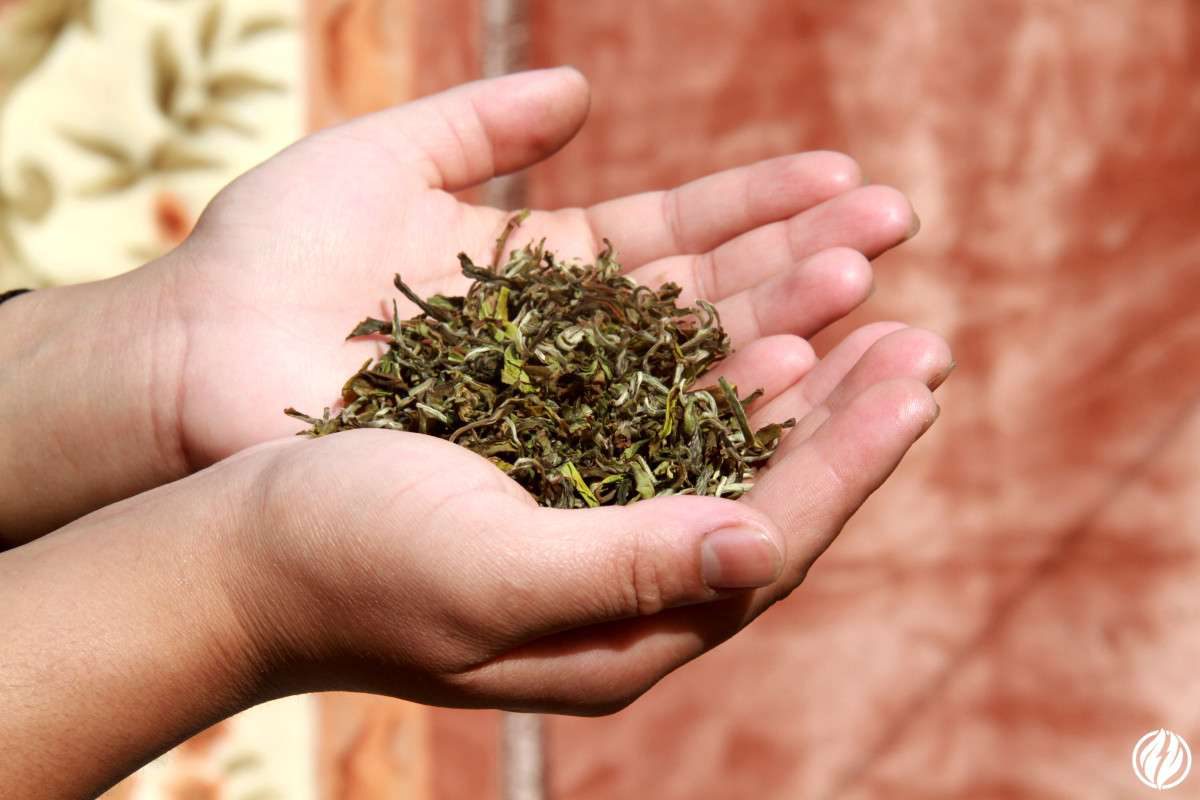
1. Picking the right tea for brewing Darjeeling
Yes, selecting the right tea for making and how to brew Darjeeling Tea is important. Knowing the different Darjeeling Flushes is important because Darjeeling varies greatly from one season to another. There are basically 4 tea seasons in Darjeeling, namely, Darjeeling First Flush, Darjeeling Second Flush, Rain or Monsoon Darjeeling and Autumn Flush. Mystically, the teas produced during different seasons are world apart. The main factor being the weather conditions prevalent and the manufacturing process of each tea. A tea made from the same plant will totally be different in the other flush. This is important because you are the person who will be drinking the tea. A person who loves First Flush may not like Second Flush teas and so on.
Four Darjeeling Flushes are laid down below in brief for your quick understanding, though the seasonal changes require a different topic of its own. I will be concentrating more on the overall characteristics of the tea rather than the factors involved in the outcome of different Darjeeling Flushes. This will give you a basic understanding of what you may like and make a right decision in buying the right season tea and end up brewing it perfectly. Ultimately, satisfying your taste buds. So read on…
If you already have been drinking Darjeeling Tea and have an idea of what you like, you can skip this portion.
FIRST FLUSH
It’s the first and the beginning season of any new year. It starts from February end and lasts till mid April. These teas are the lightest in the cup among all the flushes. Some claim that Darjeeling First Flush teas are made in the oolong fashion and maybe to a certain extent, but to dig deep in to the roots is impossible because each tea gets an individual attire aimed by its maker. So each tea differs in it’s manufacturing process. Each tea does not look and taste the same. For instance Arya Tea Estate produces Darjeeling Organic Tea called “Ruby”, which has less of greens opposed to the abundance green color of regular First Flush. Only the person making it knows how much of fermentation he has applied in it’s making. It’s all in the processing. But one thing for sure, all First Flush teas will have a lighter and delicate cup. The characteristics exhibit different levels of astringency, bitterness and floral bouquet. So you now have some idea how a First Flush tea would taste. A step in making your decision.
We’ve got lovely 2024 FIRST flush
If you are that flowery or floral flavored person with lovely translucent cups then we have some lovely New First Flush offerings for you
2024 New TeasSECOND FLUSH
Second Flush is the next big season after First Flush. The tea bushes take some rest after flushing during the First Flush season and start with the new second flushing. It starts from end of May to mid July. This is the season when the famous “muscatel” flavor gets pronounced. A ‘true’ muscatel flavor is got from chinery variety tea leaves and not from clonals. Clonals do have fruity flavor no doubt, but a chinery graded tea is more pronounced in it’s muscatel characteristics. First Flush has floral notes, while Darjeeling Second Flush is more prominent with fruity flavor. The appearance of a good Second Flush tea leaves has more of a dominating chocolate brown color mixed with a purplish bloom. It can have considerable amount of silver or golden buds. The cup is more robust or full bodied having an amber brew, darker the better. Darker doesn’t mean over steeping it. It should have a natural color. During the Second Flush a lighter cup is not desirable. A lighter cup means it’s not a pure Second Flush. But wait, clonals are lighter than the chinery grade. Take this into consideration and don’t expect a clonal to be the darkest. Well, I will elaborate more in the points below. The infused leaves lean more towards a coppery hue. To sum it up, its a full bodied tea which has fruity and nutty flavor. Another decision maker.
MOONSOON FLUSH
Third season is better known as the “Rain Flush” or “Monsoon Flush”. This is the season when a major percentage of the produce is marketed locally. This forms the cheapest buy as well as the lowest quality Darjeeling season. The reason for low quality is simply because of too much rain during this season. In Darjeeling, even the local vegetables tend to be flat and tasteless in nature during the monsoons. Locals believe that too much rain washes away all the minerals necessary to retain the flavor. The cup has more color and stronger when brewed. This, however, can be had with a dash of milk, but totally depends on an individual’s liking. Comparatively, there is less flavor in this tea.
AUTUMN FLUSH
The last and final season of Darjeeling is Autumn Flush commonly referred to as Autumnal teas. The period of production is October till November. This has a tendency of having some greens with a color mix that resembles Second Flush browns. The green leaves in this flush is important as these are more responsible for the associated tea flavors in tea. This is one flush where a cup can go lighter or more amber. To some extent it can resemble the cup of a First Flush. It all depends on the tea maker as to what he or she wants to achieve. Some believe that it’s a marriage between the First and Second Flush. Normally, Darjeeling Autumn Flush teas have a full bodied coppery cup with floral essence reminiscent of First Flush character. This Darjeeling too can be drank with dash of milk, but depends on personal preference. Last decision maker.
Now I assume that you have made a decision and the tea is in front of you. You have waited days for it’s arrival or got it from the nearest tea shop. You are now all prepared to steep that perfect cup of Darjeeling Tea. Well, before you get that water to a boil, getting the utensils ready for brewing is important. There are various utensils that are being applied around the world for steeping Darjeeling Tea. Some are experimenting it because they have developed or has acquired a taste doing it. No harm, you can brew using any utensil you have, but do note down some points below while doing the same.
WATER FOR TEA MAKING
Water, the Life of Tea – What would any tea be, if there was no water to accompany? We would rather be chewing it 🙂 Water is the most important thing you need to manage first. Not just any water, use a water that’s filtered (bottled can be fine) or spring water. A soft water is essential for preparing and drinking Darjeeling Tea. Once I had taken a pack of my favorite Castleton Moonlight Imperial to the plains of Siliguri and the light and bright liquor turned out to be rather dark and stale. Water was the main culprit here.
TEA POT FOR BREWING DARJEELING TEA
Tea Pot for Steeping Darjeeling – Not all of us have all the perfect utensils for brewing tea. Tea Pot is the most easily available accessory one can acquire and mostly available in most of the households. For Darjeeling, a good quality ceramic teapot is best. If you are using yixing clay, do not brew it if you have brewed different tea previously. It is not a hard and fast rule, but yixing can already contain existent flavors of different tea previously brewed. This could disrupt the true flavor of the Darjeeling you are brewing. We have standard Indian Tea tasting ceramic sets, comprising of 100 ml small tea pots with lids, used individually for brewing one cup of tea, cup or bowl and an optional spoon for tasting. If you don’t have it, not an issue.
CUP THAT HOLDS THE TEA
Cups or any such utensil for you to sip and drink Darjeeling – This is totally your preference. But do make it a point that it’s clean and free from external flavors. To be on the safer side, if you have cleaned, do it by continuously rinsing with water, until you smell none. Wipe it clean and sun dry it for sometime until the remaining water evaporates. This will get rid of any existing smell. Once again you need to rinse once and wipe it clean with a clean cloth and let it stay for a couple of minutes to have natural evaporation.
DARJEELING TEA TEMPERATURE GADGET
Water temperature measuring gadget – You can have any digital thermometer to measure the water temperature of Darjeeling Tea. If you have kettle with temperature measuring facility, great. If you don’t have any of these, then just heat the water until it boils, but don’t over boil it.
TEA TIMER
This you can manage. You don’t need to buy a tea timer, it’s already there in one of your phones. If you don’t have it, just download one of the freely available apps from either Google Play or according to your phone’s downloadable option. Just get that screen ready in front of you.
Yes, the Darjeeling Tea taste is hard to define by just tasting one Darjeeling when there are hundreds available. Here we will cover general tasting tips which are essential for you to really enjoy the Darjeeling you are drinking or rather the taste of Darjeeling Tea. Some of the general things you need to take into consideration are various stages of leaf structure during the process of brewing. Lastly the liqor in the cup that you would ultimately be sipping! So let’s start!
PREPARATION FOR MAKING DARJEELING TEA
The tea is in your possession. Open the pack, shake gently in vertical motion and smell the tea leaves. The associated aromas that get into your nostrils is the first enjoyment you can have from a good quality Darjeeling and the initial step towards making Darjeeling Tea. Lets assume you are making 100 ml of tea, take about 2 grams of tea and put in the vessel. But let the vessel be warm enough so that it doesn’t cool the water rapidly and hinder with the actual temperature needed for tea. If you have multiple cups to fulfill, then roughly add one teaspoon for each cup in the tea pot which should be large enough to accommodate it. The amount of tea leaves is however a different topic which I will discuss later because it depends on the leaf size and type of tea.
Now bring that kettle to a boil. All the things are setup in front of you. Now, it’s time we ignite the fire and put the kettle on. For standard Darjeeling Tea drinking preparation, just observe the water till it comes to a boil, but don’t over boil it. And do not re-boil or re-use the water for another fresh steeping. It is because re-boiling will further lessen the oxygen content and your tea will appear flat. Let it cool down for about 30 secs to a minute.
CHECKOUT OUR NEW 2024 first FLUSH
We have a range of limited hand pick First Flush teas that are Yum!
CHECK IT OUTTake 30% OFF your First Order!
Code: “FIRSTORDER”
INSIDER DARJEELING TEA AROMA TIP*
Get instant tea aroma from the Darjeeling Tea leaves you have at hand – This is however not practiced anywhere, but we do it, to instantly feel the initial aromas. Get an extra cup with any lid to cover it up. Put a small amount of tea leaves into it. Pour about 5-10 drops of the boiled water (or just enough to wet the tea leaves, but don’t let it float), instantly cover the lid and shake it gently in horizontal motion for about 5-6 times. Instantly, remove the lid to only half, tuck your nose to the opening and smell it. You will instantly know the various aromas associated with it and also assess the value of the tea leaves you have bought. You may wonder that this can be achieved from the infused tea leaves, but when infused for a certain period of time, the characteristics get transferred to water and only that remains gets available. Though this is also important in assessing the quality of tea. Do not re-use this. This is just to get the initial flavors which works similar to the aroma cup.
NOW TO REAL STEEPING DARJEELING
Remember, you put about 2 grams of tea in about 100 ml vessel. I will assume that your vessel is warm enough. Pour the water on top of the tea leaves and immediately cover it with the lid. Let it steep for about 3-5 minutes depending on the type of tea you are brewing. Pour the tea into your cup(s) and while doing so, breathe in the aroma. Feel the fresh, floral or fruity characteristics.
INSPECTION OF WET TEA LEAVES
Before you sip the tea, it is always advisable to take a glimpse of the infused or wet tea leaves. Once the tea is poured, take out the wet tea leaves in a flat porcelain plate or on the lid inverted. Inspect it. A lively bright infusion with a good aroma depicts a good quality make. The color of infusion depends on which type of tea you are brewing and from which season. A good tea from First Flush will normally have a bright and lively infusion. Various shades of green will be prominent along with some browns which normally constitute the tips, but not necessarily. It will have a floral essence. Second Flush infusion will also be bright, but totally opposed to First Flush. It will tend to be more coppery in its infusion along with various shades of brown. A Second Flush tea infusion with more of greens is considered a mixed flush and not a pure Second Flush tea. Infusion with less of green is desirable during the Second Flush. Well during the Autumn Flush both greens and browns are desirable.
FINALLY THE CUP OF DARJEELING TEA TO DRINK
Now the tea in the cup gets it’s turn. Depending on the type of tea and flush, the color of tea will reflect it’s originality. Put the spoon or cup in contact with your lips. Press it to your lower lip. Don’t open your mouth too wide. Now pull the tea inside with the help of your breadth. It will hit most of your sensory taste buds. But please note that, you need to practice this a number of times. It can sometimes choke you because the body thinks that you are taking in air. This needs some practice. Well, that’s for knowing the quality of tea, but you can’t possibly be doing it with every sip. You can try a few times and afterwards drink your Darjeeling Tea normally, enjoy the tea! First Flush will have a sparkling and lighter brew having floral essence. Second Flush will be more full bodied having fruity flavor.
This has confused a lot of our customers. Darjeeling can come in various leaf sizes whole leaf, broken, fannings etc. And to add more to the confusion, the whole leaf size structure is not uniform at all. We will be dealing with whole leaf here because the size of brokens, fannings and dust will considerably be the same giving stronger brews and the other reason is that we don’t deal with it. We only have whole leaf teas. There are various factors involved for the difference in the size of whole leaf. Firstly, its the type of tea leaves used. In Darjeeling there are generally three types of tea leaves, Assamica, Chinery and Clones. Assamica and Clones are usually larger versions and the chinery are smaller tea leaves. Clones and Chinery are highly sought after due to the quality of tea they are able to yield. Most of our teas online are derived either from clones or chinery varietal. Hence we will be dealing with the same. I won’t delve into what are clones and chinery bushes because it’s another topic of its own, but rather focus on how to prepare Darjeeling Tea made from these.
STEEPING CHINERY DARJEELING
China variety or chinery teas are more prominent during the Second Flush due to its ability to enhance the famed Darjeeling Muscatel character. These were the initial giants who were responsible for the rising of Darjeeling name. Castleton Muscatel Tea, which is a china grade tea, is considered the number one having authentic and prominent muscatel or musky character. During the First Flush, it comprises of the classic grade. Chinery teas are rather smaller in size comparatively. First use about 2 grams of tea for a cup and brew for about 3 minutes. This variety has a reputation of turning bitter if steeped for long. ‘Bitter tea’, you might ponder, but let me tell you that, a slight Darjeeling bitterness has a fan following as well. Who knows you may like it too. Slight bitterness is enjoyable to me as well. First Flush, both clonals and chinery can have some astringency, but this too is welcome in smaller amounts. These are the inherent characteristics of a First Flush tea. If it gets too bitter for you, then reduce the tea leaves used or steep for a little lesser time. Experiment with different amounts of tea leaves and steeping timings. You will finally get the taste you want. It’s so, because the whole idea of making Darjeeling Tea narrows down to a simple individual palate liking.
MAKING CLONAL DARJEELING
Clonals are rather larger versions in comparison to china variety tea, but wait, this can get a little tricky as clonals can come in smaller leaf versions too. Well, let me explain it to you. This is nothing, but an outcome of rounds of plucking applied on a particular tea bush. During the First Flush, one tea bush can bear new tea leaves up to 4 times. The first round of plucking, if done during peak quality time, will have the largest version of the tea leaves. Slowly as the rounds go higher, the tea leaves become lesser in quality with less of buds and also in size. This is the reason why an exact named tea can have various quality versions. For example our Castleton Moonlight Tea was got from the first round plucking and only 12 kgs were made. Clonals are always lighter in the cup than the china variety. It is less astringent and bitter. So if you don’t like that small amounts of bitterness which comes packed with chinery teas, then clonals are your best bet. But keep in mind, when larger and smaller clonal tea leaves are compared, the smaller will have a much stronger brew.
Clonals are usually larger in size and voluminous, so it is advisable you use more of the tea leaves than the amount of china grade you usually perceive and use. Meaning 2 grams of clonals will look much larger in volume than china grade tea. The simple steeping rule is ‘look at the size of your tea leaves’ and steep accordingly. Try to make Darjeeling with different amounts with different steeping timings. Get the best your palate likes. Simple rule of thumb is, smaller tea leaves, lesser steeping timing.
Do you know that in almost all of the Darjeeling Tea Estates, most of the teas are steeped for 5 minutes? This has become a standard practice. The reason behind it is simple. Once you put your tea in water, it should be allowed to share its characteristics and let the water embrace it. If ample time is not allowed, then the real characteristics of a tea can go missing. Yes, I have mentioned above to experiment different timings, but also keep in mind to let your tea leaves have enough room to expand and let its characteristics out into water.
One of our customers had complained in the past that one of our teas had no flavor. I was quite surprised as it was one of the most flavorful teas I had tried. I asked her about water etc. and also the steeping timing. She informed me that she had steeped for 2 minutes, which was a bit low for the clonal tea leaves she was steeping. It needed at-least 3 minutes steeping. I advised her the same and she was all ‘wow’. Darjeeling does not withstand multiple steepings properly and I do not recommend doing it. Well, this is also no strict rule, you can go upto 2-3 steepings, but the flavor would have vanished by then.
Also try your tea when allowed to cool down Extra point added here – I know hot tea is the preferred one and best to know the characteristics, also try your tea when it has cooled down. With Darjeeling, you will get a different set of flavors when allowed to cool. Try it and drink Darjeeling enjoyably!
In the olden days, Darjeeling Tea was prepared in the classic fashion, only pure black teas, but over time, it evolved according to various reasons. We never use to hear Darjeeling green, white or oolong, but only bulk production of black teas. Now, you get various versions from various tea gardens in Darjeeling. Though, various guides on steeping these types of teas are found ample on the internet, I would lay some ideas here as well. Please keep in mind the points discussed above while steeping the ones below. Start making and enjoy your Darjeeling drink!
PREPARING DARJEELING BLACK TEAS
Darjeeling black tea can be got from Assamica, chinery and clonal variety tea leaves. Darjeeling Black tea need a little higher temperature of about 203 F. Make a steeping time of about 3-5 minutes and experiment with the tea quantity and steeping timings. Remember, smaller tea leaves gets shorter steeping time and the same amount of larger tea leaves gets longer steeping time. For First Flush teas, use a temperature slightly lower, as the teas are very delicate in nature. About 195 F can be ideal.
PREPARING DARJEELING GREEN TEAS
Frankly, most of the Darjeeling green tea produced are during off quality season. But I also won’t disagree with the finer production of green teas manufactured during peak quality time such as Arya Green organic tea varieties. Yes, quality Darjeeling Green teas can be a possibility, if made during peak quality time, but during this time, most of the tea gardens are manufacturing other versions which sell at a much higher price. Only a select few produce during quality time and we get these teas. Using a water temperature much lesser, about 158 – 167 F is preferable. Specially Darjeeling Greens tend to get bitter if greater amount of tea leaves are used or is steeped for a longer period. Steeping for 2-3 minutes is recommended, but you can experiment with the amount of tea leaves used and of course various steeping timings. Once you get the best taste, that is your ideal steeping norms because at the end you are the one who should enjoy every gulp.
PREPARING DARJEELING WHITE TEAS
As oolongs, Darjeeling White Tea varieties are also made, most of time, with assam or clonal tea leaves. Darjeeling white teas are more delicate than the oolongs. There are a great variety of white teas you can find in the market these days. Some Darjeeling Whites are totally handmade such as our Arya Organic White Tea called Arya Pearl. You may find teas marked as white consisting of only the buds, but mind you, when it comes to Darjeelings, apart from the buds, the actual tea leaves are crucial in the overall flavor profile of the tea. Buds alone cannot adhere to the total flavor composition of a tea. So you know what I mean.
So how do you make Darjeeling whites then? Darjeeling whites will be among the largest size teas having a tremendous voluminous profile. Take about 2 grams of tea and steep for a little longer period for the teas will be delicate and light. This will enable more characteristics to enter water and hence enhance the profile. Steep for 4-5 minutes. Regarding Darjeeling White Teas and keeping in mind the delicate nature, water temperature should not be so high so that it literally burns or cooks the tea. Let the temperature be around 185 F. Experiment with the amount of tea leaves and different timings. You will get some light and lovely vegetal notes accompanied by light floral or fruity flavors depending on which season tea you are tasting. Drink and enjoy your delicate, yet elegant Darjeeling White tea.
PREPARING DARJEELING OOLONG TEAS
Many tea connoisseurs believe Darjeelings to be oolongs rather than blacks, but there are a lot of complications to state that which needs a separate write up on its own. It all depends on various factors such as season, aim of a tea maker, types of tea leaves used, weather etc. Well lets not delve deep into it at the moment and see how to brew Darjeeling Oolong Tea varieties. Most of the Darjeeling oolongs are made from either Assam or Clonal varieties. Assam varieties are inferior in quality where as clonals have a superior quality. Clonals too have variations such as AV2, B157, PB 312 and depending on these as well the quality differes. AV2 is the most sought after for its quality and also the taste it delivers. Most of our clonals are from the AV2 clonal cultivar.
Since most of the Darjeeling oolongs are made from Assam or clonals which refer to as being bigger in leaf size than the china varieties, these are often more voluminous are occupy larger space. Bigger doesn’t mean heavier, here its voluminous not heavier. So, accordingly use the amount of tea leaves required – refer to our point above under “Steeping Clonal Darjeeling”. Set a water temperature about 194-203 F and steep for about 3-5 minutes. This however does not turn bitter in comparison to steeping of black and green teas. Experiment with the heap and with the steeping timings – the best experience from drinking Darjeeling that suits your palate is your best setting to brew the oolong.
DARJEELING TEA WITH MILK
Yes, we have seen a long history of tea associated with milk, but in the case of Darjeeling, Darjeeling Tea with milk is not advisable and is enjoyed best on it’s own. Darjeeling is very delicate having its own natural flavors and has a weak body compared to other “Crush, Tear Curl” (ctc) teas. However, it is not a strict rule and can be had with a slight dash of milk.
You must have heard of Indian Chai. The normal Indian Chai found in abundance in the streets of India is not made with full leaf teas and definitely not with Darjeeling – its not Darjeeling Milk Tea. It is made by using CTC teas because these have stronger brews and goes well with herbs, spices and milk. All can be boiled together and a concoction is made known as Chai and if spices and herbs are made, its known as “Masala Chai“.
With Darjeeling its a little different as it doesn’t have a strong liquor body as CTC. Darjeeling is best to drink without milk and avoid introducing herbs and spices because Darjeeling is famous for it’s natural flavor of being fruity, nutty and flowery. The added ingredients can subdue the natural flavors and overall disappoint the natural characteristics of a real Darjeeling flavor. However if you want to try, then don’t try with First and Second Flush teas – these have high natural flavors, but delicate at the same time. You can try Darjeeling with milk by adding a dash of milk to teas from Monsoon Flush or Autumn Flush Darjeelings and to grades of tea having stronger brews such as brokens, fannings and dust due to their smaller leaf size.
Thanks for heading here!
BEFORE YOU GO, DO CHECK OUT OUR TEAS!
DOESN’T TAKE MUCH TIME, NO NEED TO BUY 🙂
Take 30% OFF your First Order!
Code: “FIRSTORDER”
Added Point: Darjeeling TEA Tasting in the gardens/estates
Darjeeling Tea tasting in the tea gardens are done by professional tea tasters / makers only, since it is defined as a refined art to assess quality. This is done in order to ensure authentic and valid comparison between the procured Darjeeling Tea samples and to provide conformity to a standard procedure. The subtle and delicate flavor nuances in each invoice of tea narrate a story about its creation to the experienced tea taster. A good taster’s palate memory is prodigious, his senses alert, constantly categorizing, comparing and drawing on past experience, to evaluate a particular tea within a second or two before moving to the next. No surprise then, that the craft is viewed with a tinge of awe and wonder!
The Standard Tea making procedure followed in most of the Tea gardens in Darjeeling
Batches and liquor is prepared for each Tea tasting process. The tea accessories that are required for Darjeeling tasting are porcelain tea pots of 100 ml, stainless steel kettle and a sand-watch of 5 minutes. The tasting procedure comprises of 2% tea brew which is prepared with 2 grams made tea infused for 5 minutes. This is boiled in 100 ml of distilled water.
The Making and Sipping Process
After the liquor is poured into the porcelain bowl, the infused tea leaf is shaken on to the lid by inverting the cup. The infused tea leaf and the inverted lid are kept back on top of the cup. The tea is tasted without milk and sugar and sometimes a blender may prefer to taste it with milk in larger cups. In organoleptic evaluation of tea quality, Darjeeling dry tea is examined first for tea color, aroma, uniformity and tea tips. After this procedure, it passes over to the infused tea which should ideally be bearing a full size unfolded leaf with a color relating to it’s season. Good quality Darjeeling liquor is judged by clear bright color (depending on flush) meniscus where the tea liquor touches the bowl.
While tasting Darjeeling, the liquor is sipped into the mouth with a spontaneous breath which brings the liquor in contact with the tongue and other parts of the mouth which are very sensitive to flavor and astringency, thus the liquor is not gulped or swallowed but expectorated into the spittoon.
The Tea Tasting Report
After the tea tasting procedure, the report of the tea taste relates to tea leaf style, color, brightness, flavor, astringency and the order of the preference of Darjeeling samples which also depends on which flush the tea belongs to. This does not end here, the tea taster can then appreciate all the right qualities of tea while being processed and point out areas which needs rectification.
The sharply honed senses of sight, touch, smell and taste, all play a pivotal roll when evaluating ‘quality Darjeeling tea‘.
REMEMBER YOU GET FIRST ORDER DISCOUNT!
CONCLUSION
Preparing or brewing or drinking a cup of Darjeeling involves a lot of factors such as mentioned on this post which results in the overall characteristics of a particular cup. All Darjeeling black cannot have the same characteristics if taken from different seasons or cultivars etc. So some factors are necessary, such as keeping in mind the tea season the tea came from. The basic idea is to keep track of the type of tea you are tasting and for that you need to keep these things in mind
- Tea season the tea belongs to
- Type of tea leaves whether china, clonal or assam
- And type of tea whether black, green etc.
As is evident, tea tasting comes with practice and frequency. The more you taste Darjeeling, the more you start to associate various flavors and thus, bridge the gap.
Hopefully, you now have some idea on how to drink Darjeeling Tea and I believe that you will come out with some favorable result. Remember, brewing a cup of tea ultimately rests on your individual palate liking. The taste you acquire and like, may not be a pleasant one for the other. So, Enjoy doing your tea tastings and achieve your results!
GREAT TO HAVE YOU HERE!


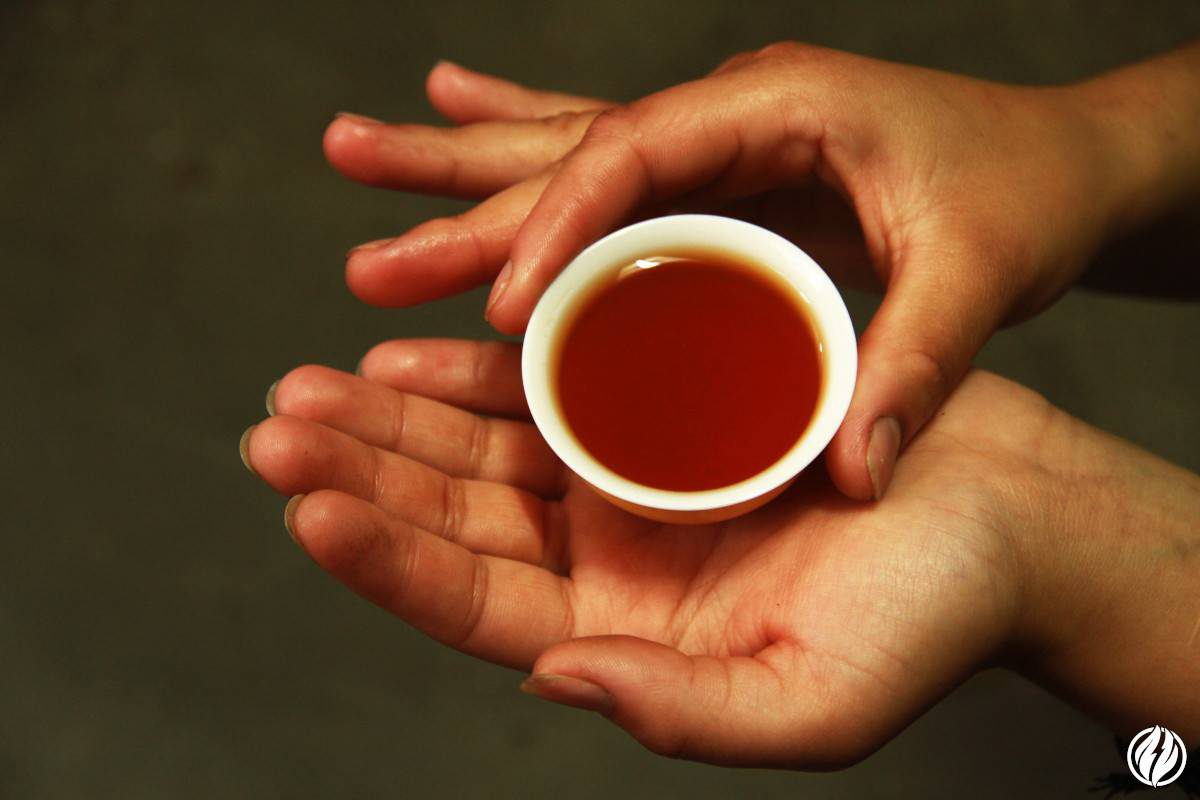
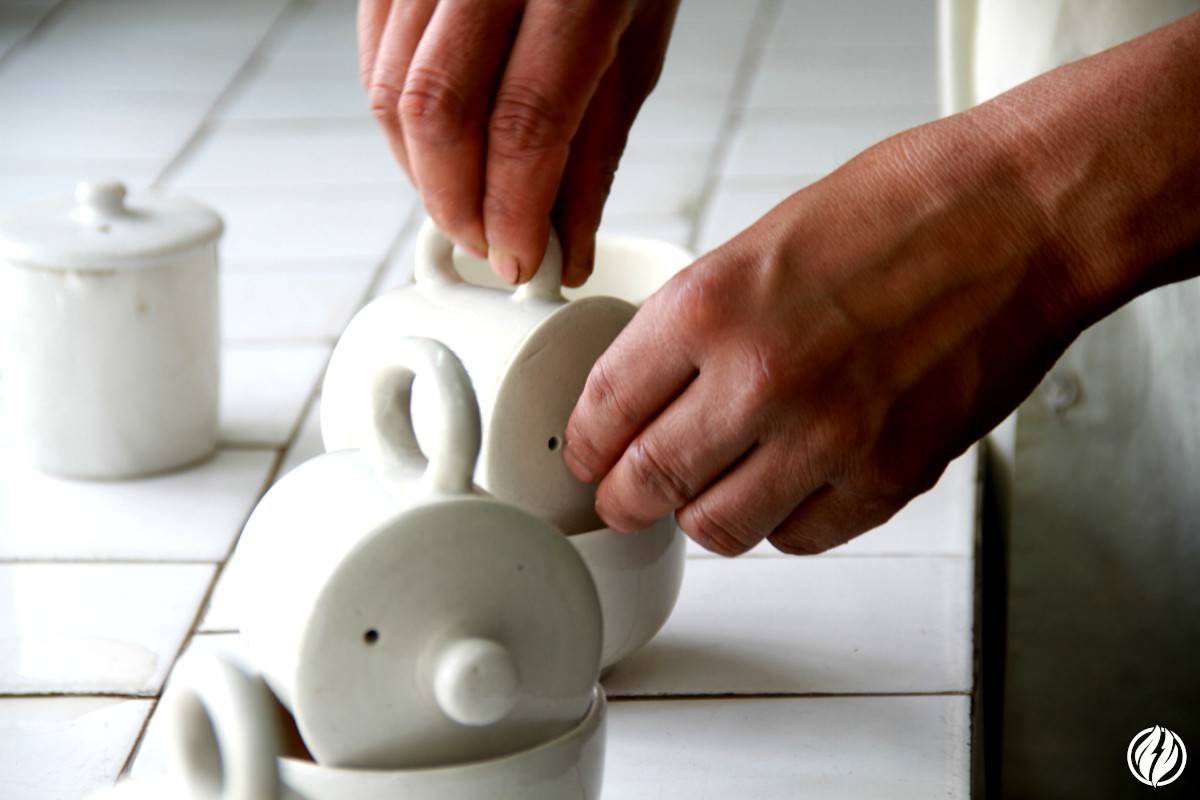
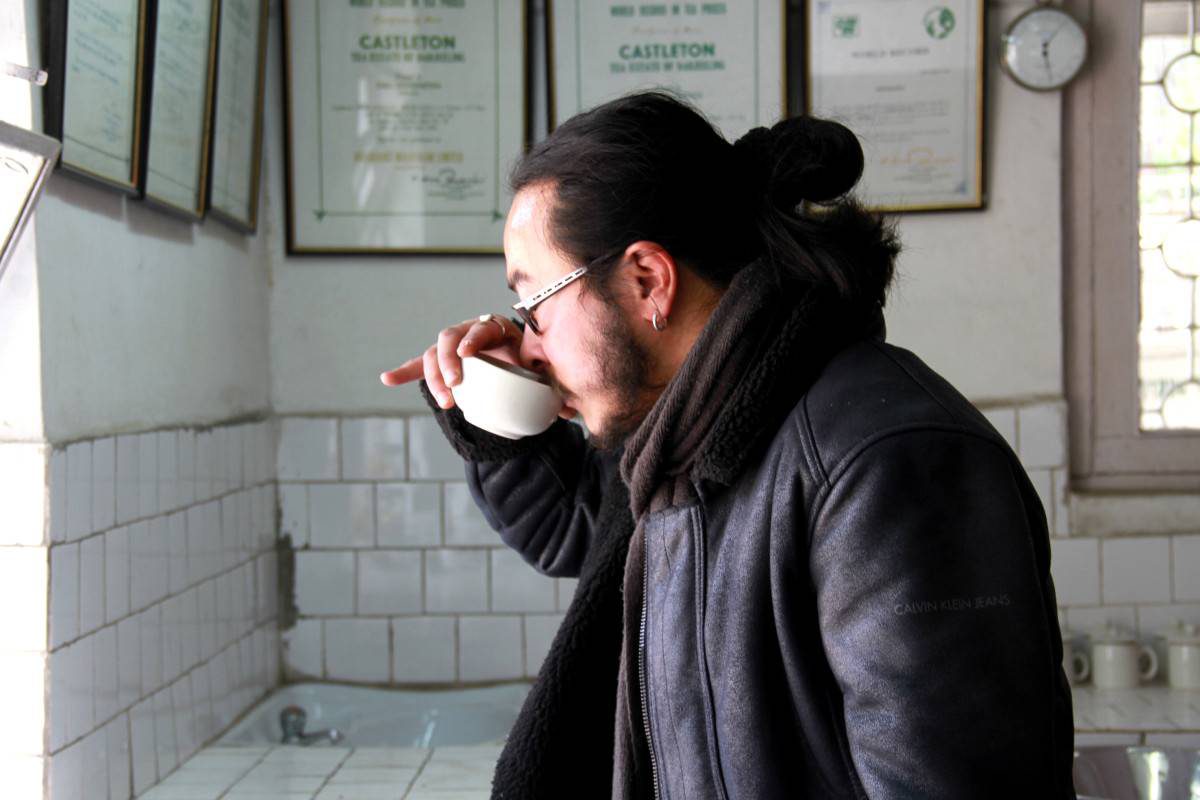
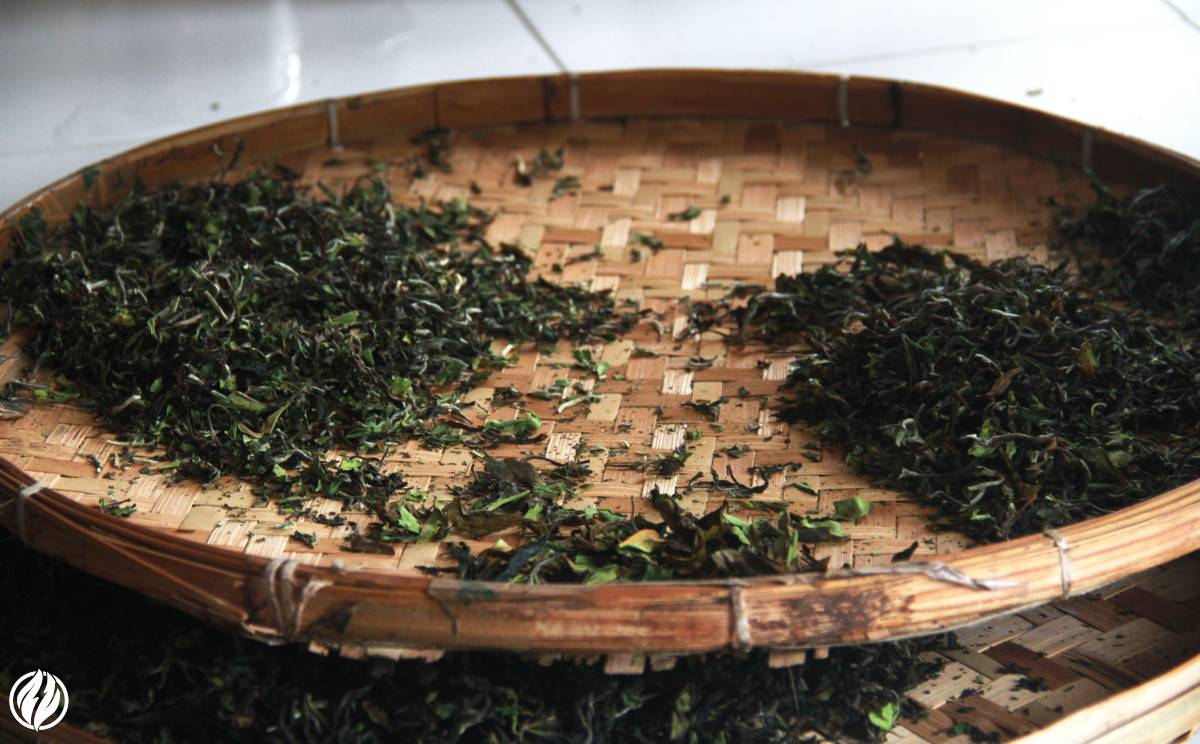
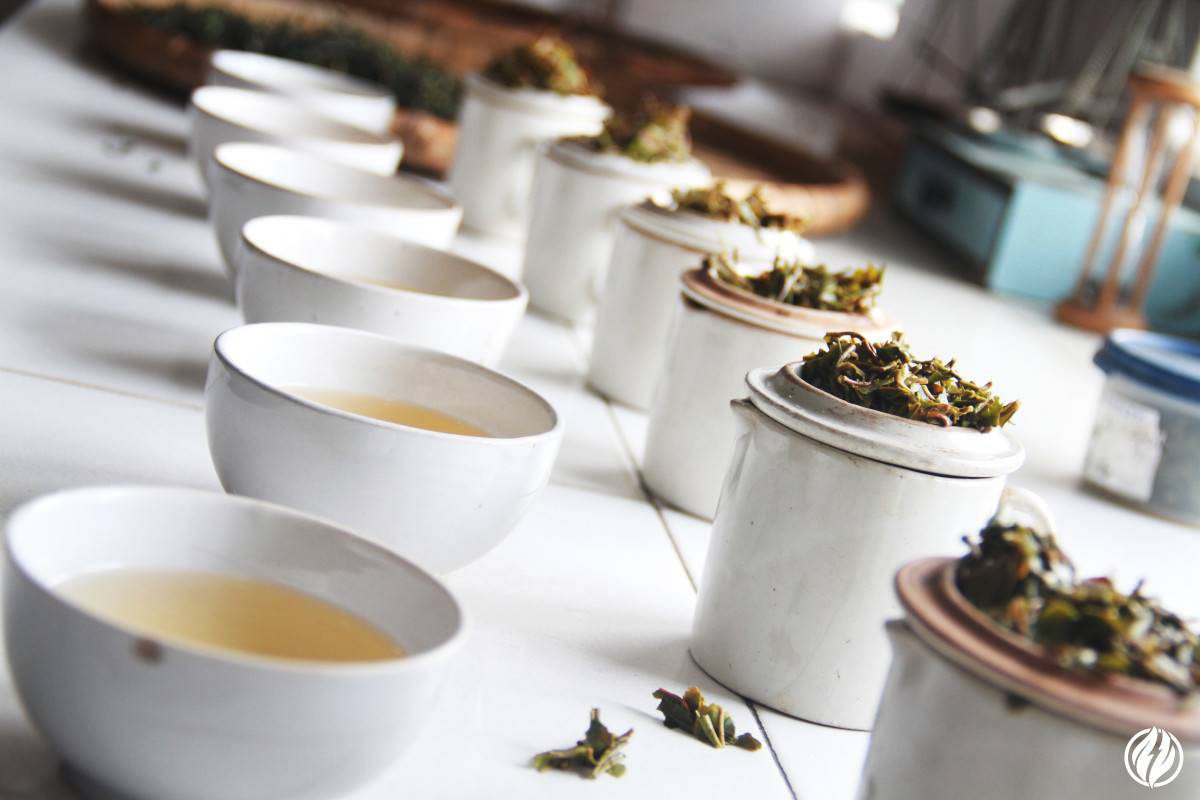
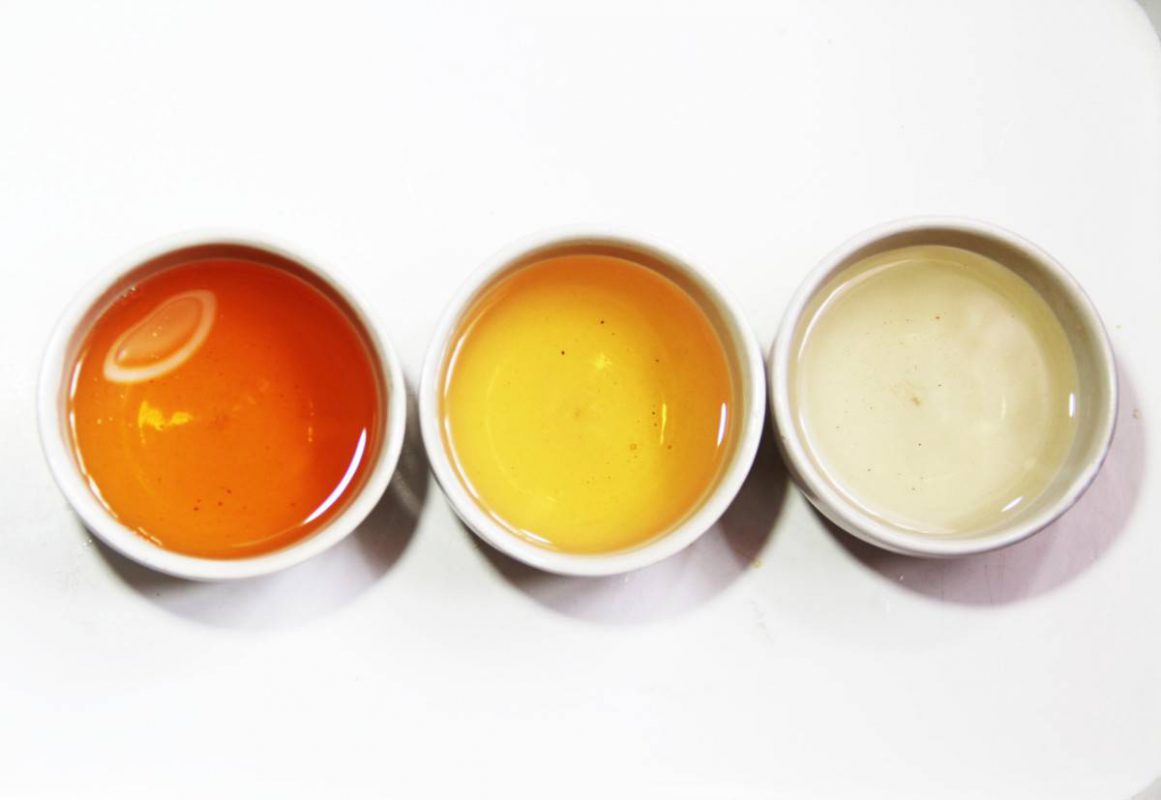
An excellent read that will keep readers – particularly me – coming back for more! Also, I’d genuinely appreciate if you check my website about PR Marketing. Thank you and best of luck!